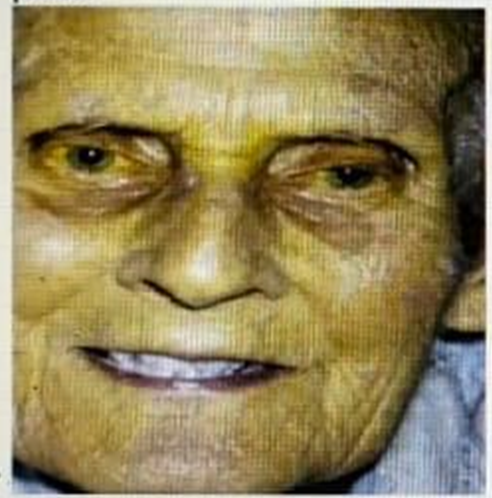A 75-year-old male who is a chronic alcoholic present to the medical office for his annual wellness visit. How would describe the findings found in photo?

Acanthosis Nigricans
Cyanosis
Jaundice
Carotenemia
The Correct Answer is C
A. Acanthosis Nigricans:
Acanthosis nigricans is characterized by dark, velvety patches of skin, often found in body folds such as the neck, armpits, and groin. It does not present as the yellow discoloration seen in the photo.
B. Cyanosis:
Cyanosis is a bluish discoloration of the skin and mucous membranes due to inadequate oxygenation of the blood. The image shows yellow discoloration, not the blue tint associated with cyanosis.
C. Jaundice:
Jaundice is indicated by a yellowish tint to the skin and sclera due to elevated bilirubin levels, commonly associated with liver dysfunction. The photo clearly shows this yellow discoloration, consistent with jaundice, often seen in chronic alcoholics with liver disease.
D. Carotenemia:
Carotenemia presents as a yellow-orange discoloration of the skin, especially on the palms and soles, due to high levels of carotene in the blood. It does not typically affect the sclera, which differentiates it from jaundice. The uniform yellowing of the skin and eyes in the photo aligns more with jaundice.
Nursing Test Bank
Naxlex Comprehensive Predictor Exams
Related Questions
Correct Answer is C
Explanation
The Body Mass Index (BMI) is calculated using the formula:
BMI = weight(kg) / height(m)2
First, we need to convert the height from feet and inches to meters.
There are approximately 0.3048 meters in a foot and 0.0254 meters in an inch.
So, 5 feet 5 inches is approximately 1.65 meters.
Substituting the given values into the formula:
BMI = 60 / (1.65)2
This gives us a BMI of approximately 22 when rounded to the nearest whole number.
Therefore, the correct answer is 22 BMI.
Correct Answer is ["B","C","D"]
Explanation
A) Encourage the client to look at the balance beam:
Encouraging the client to look at the balance beam may help her feel more engaged in the process of weight measurement. This can foster trust and cooperation during what may be a challenging procedure due to her history of Anorexia and Bulimia Nervosa.
B) Have the client wear the same clothing every day:
Consistency in clothing helps to minimize variations in weight measurements that could be attributed to changes in clothing weight rather than actual body weight fluctuations. This practice ensures more accurate and reliable serial weight measurements.
C) Weigh the client at the same time in the morning:
Weighing the client at the same time each day helps to standardize conditions and minimize daily variations due to factors like hydration levels and food intake, providing more accurate serial weight measurements.
D) Use the same scale to weigh the client:
Using the same scale ensures consistency in measurement accuracy. Different scales can yield slightly different readings, which could affect the interpretation of weight trends over time.
E) Discuss the client's weight with her after each measurement:
While discussing weight may be part of the client's care plan, it's not necessarily a standard action during the process of conducting serial weight measurements. The focus during the actual weighing process should be on maintaining consistency and accuracy.
Whether you are a student looking to ace your exams or a practicing nurse seeking to enhance your expertise , our nursing education contents will empower you with the confidence and competence to make a difference in the lives of patients and become a respected leader in the healthcare field.
Visit Naxlex, invest in your future and unlock endless possibilities with our unparalleled nursing education contents today
Report Wrong Answer on the Current Question
Do you disagree with the answer? If yes, what is your expected answer? Explain.
Kindly be descriptive with the issue you are facing.
